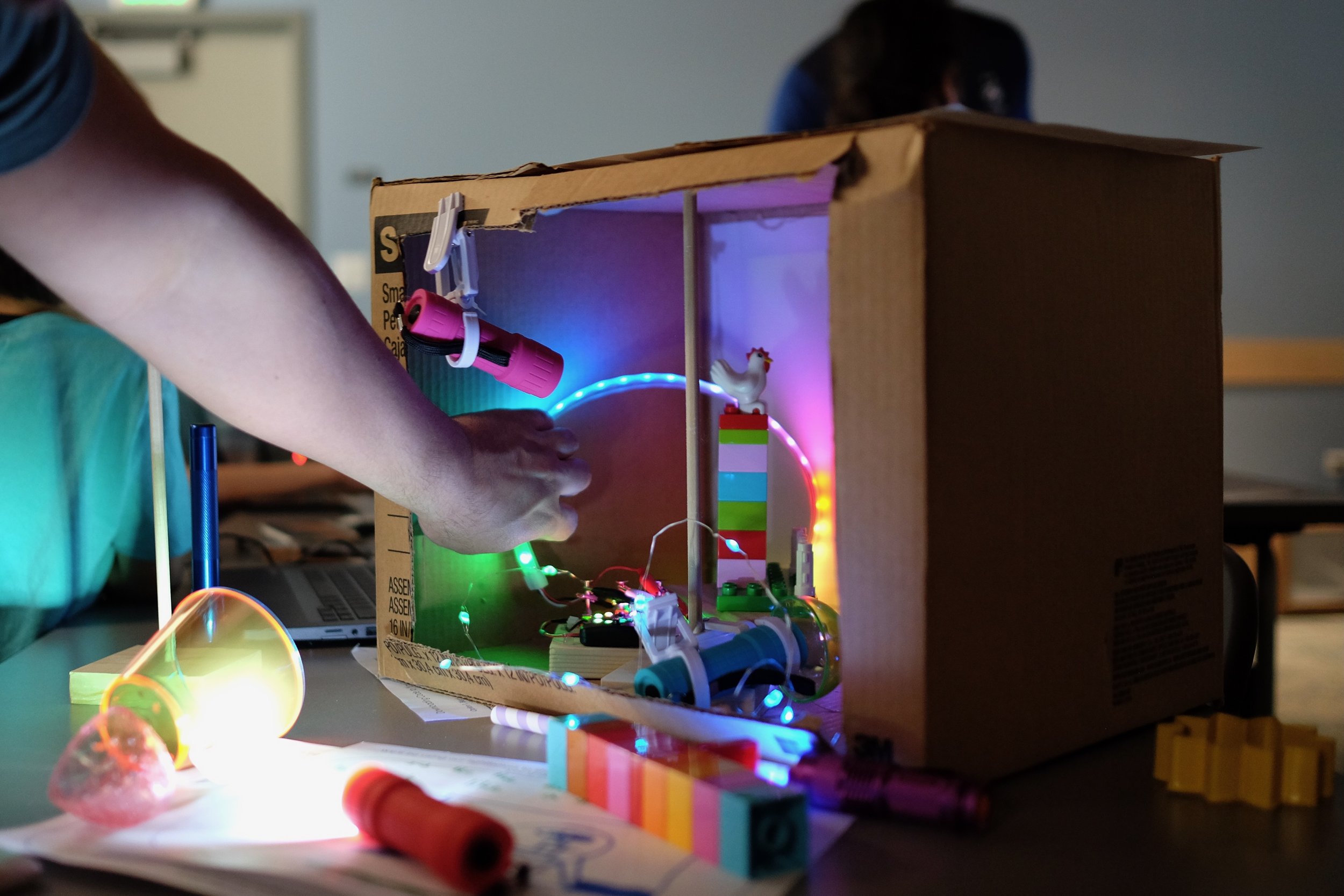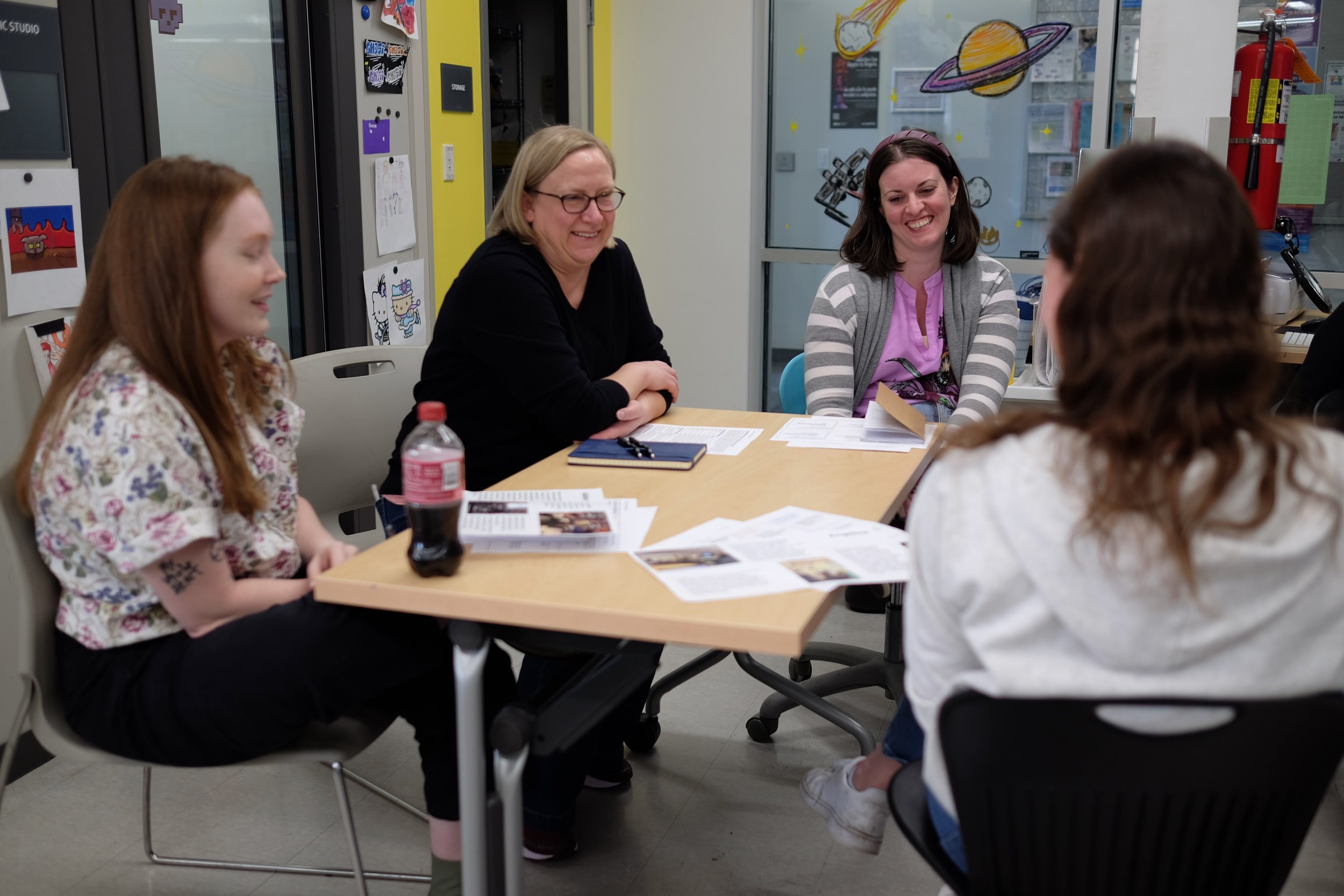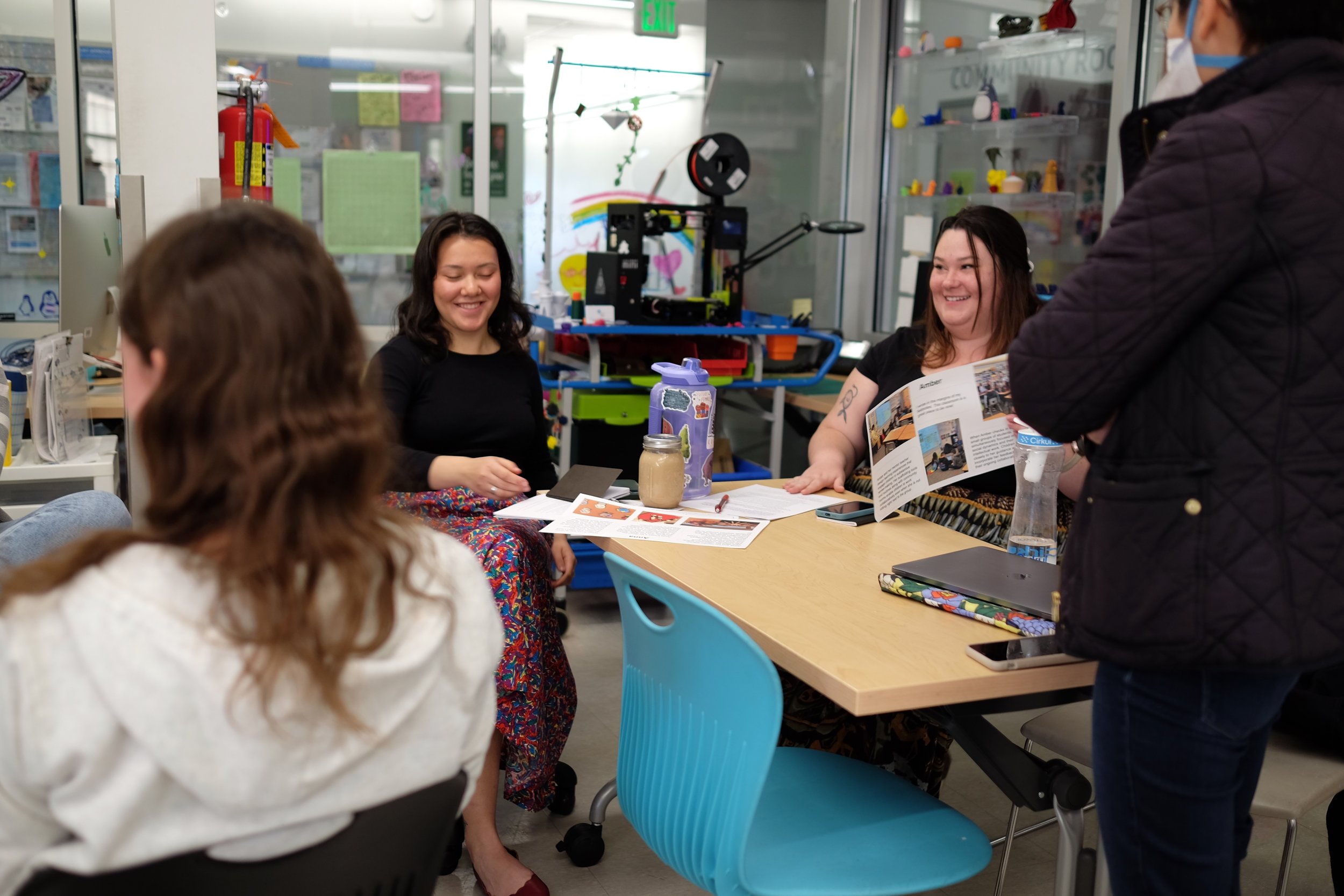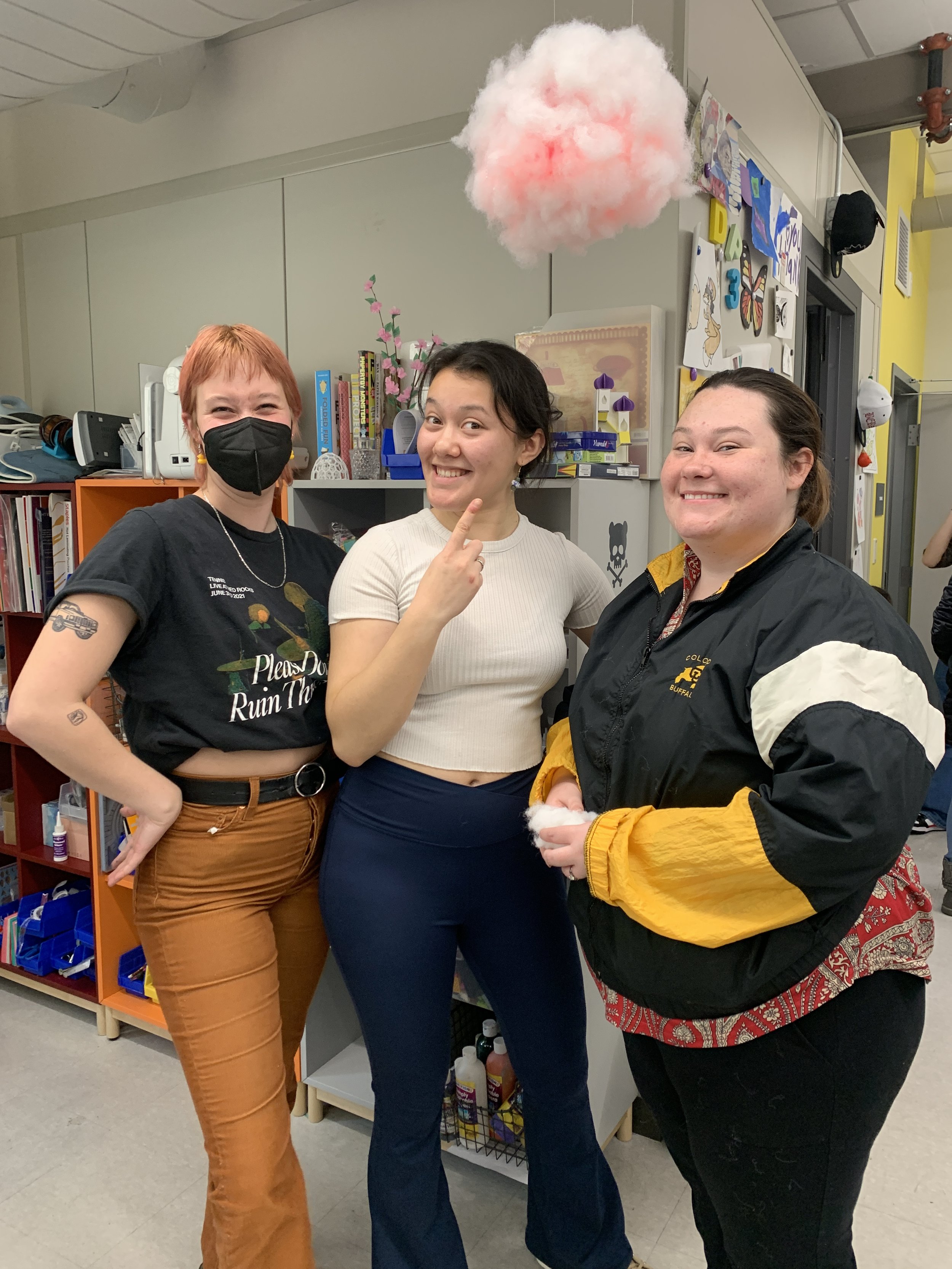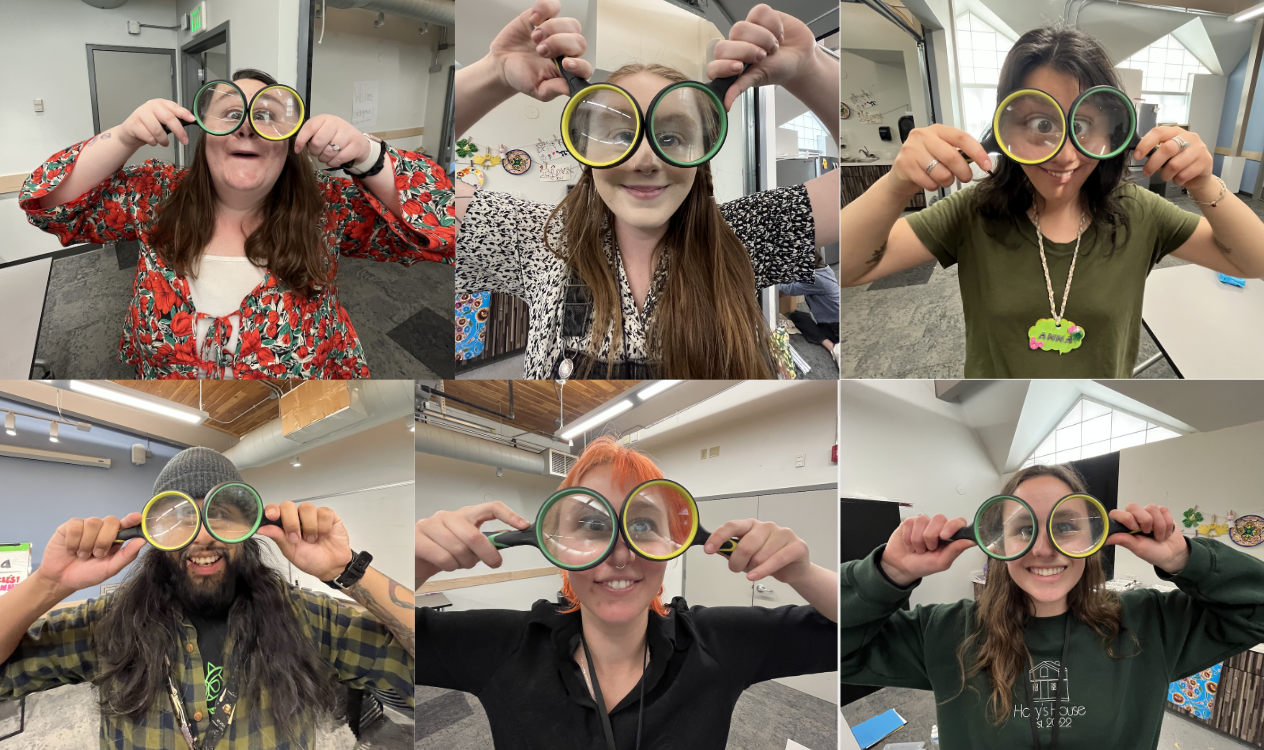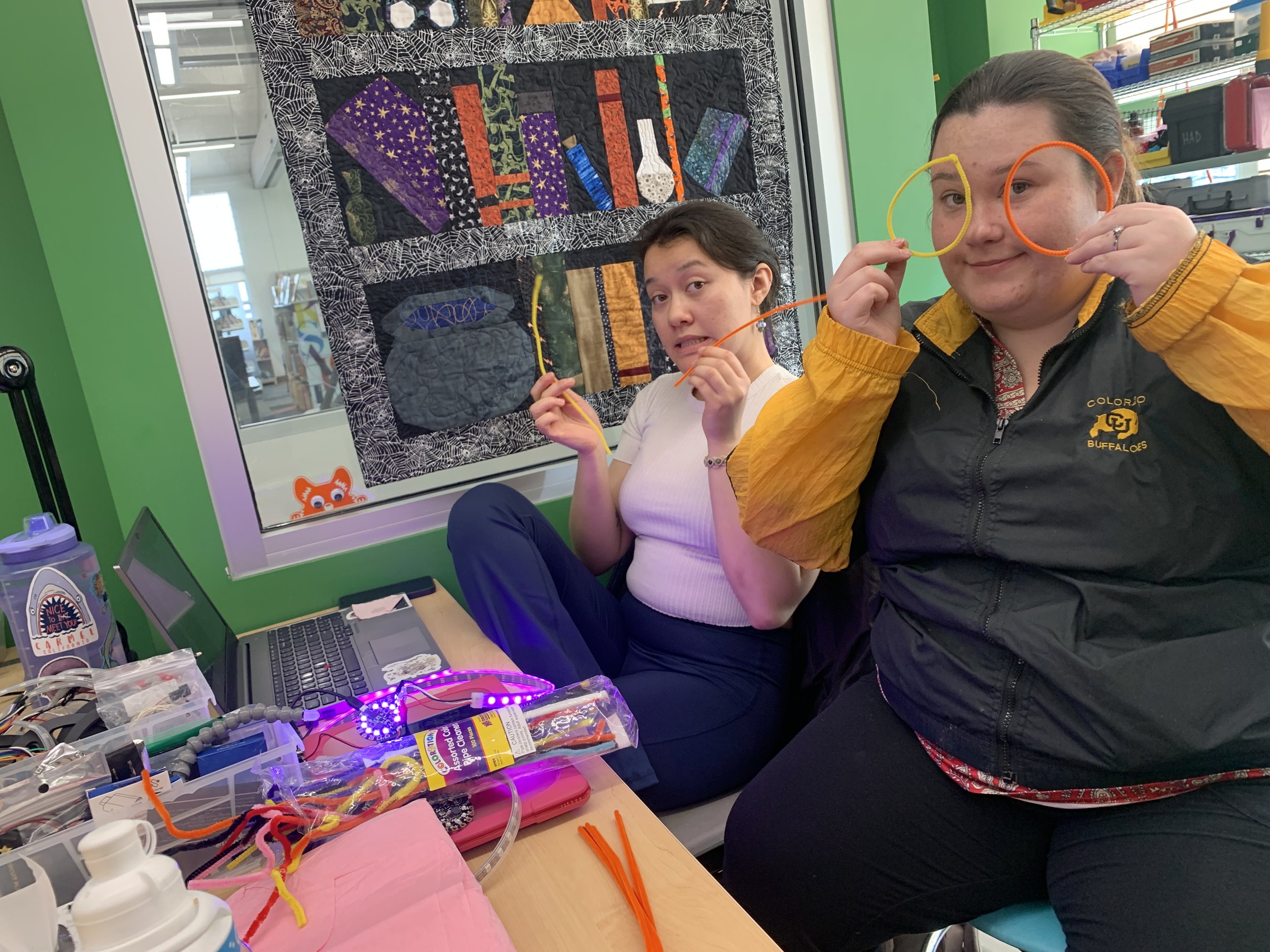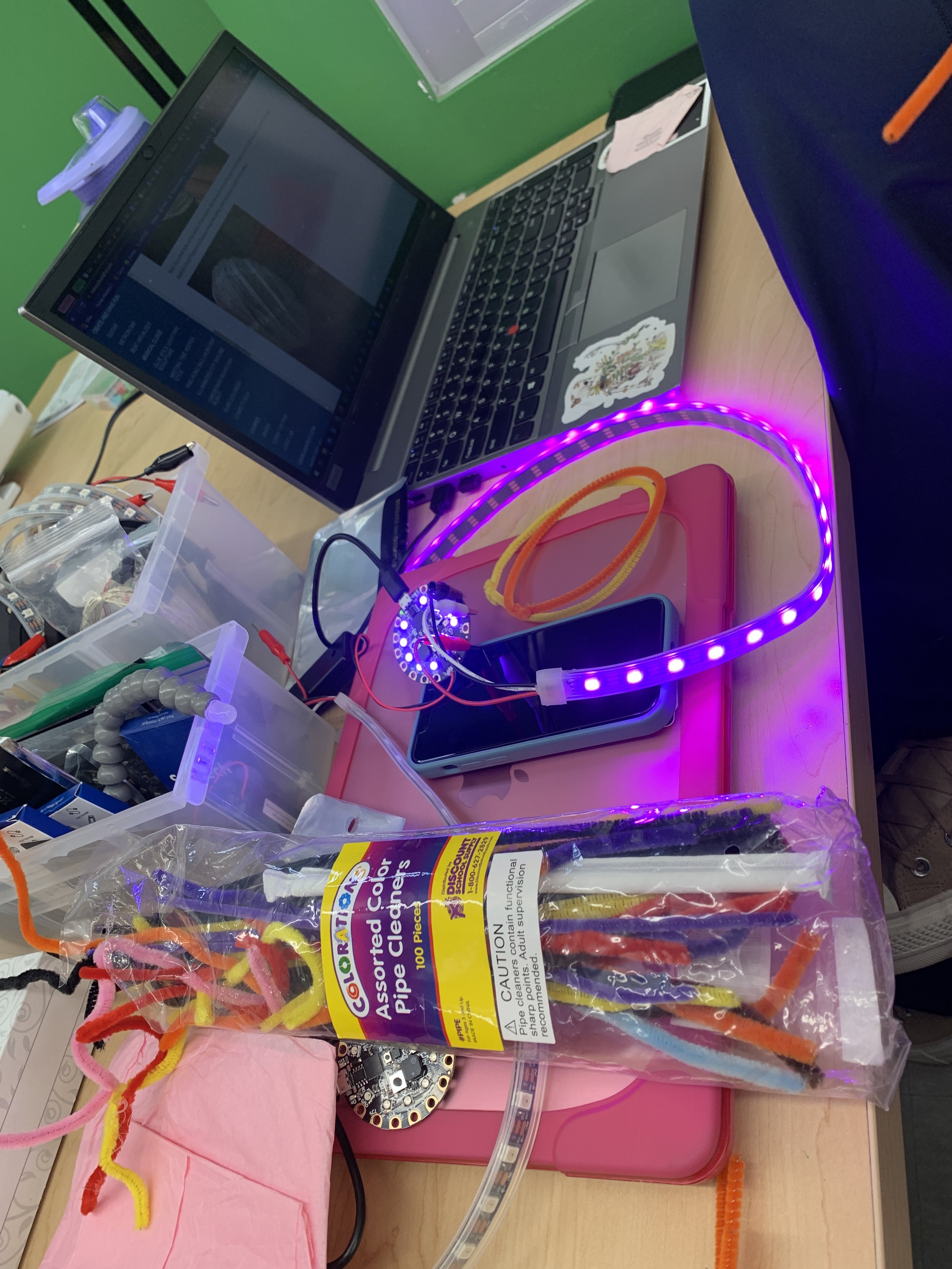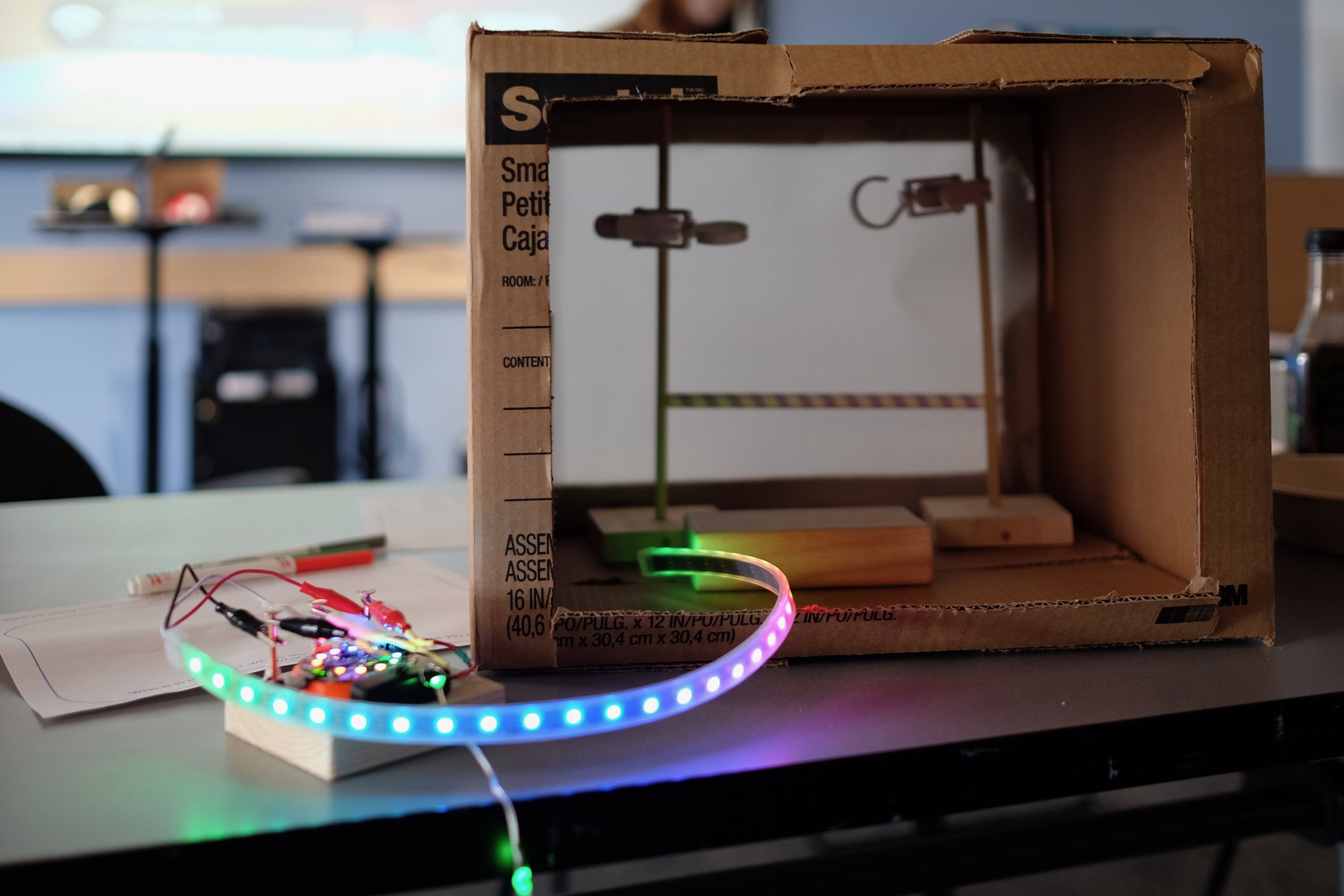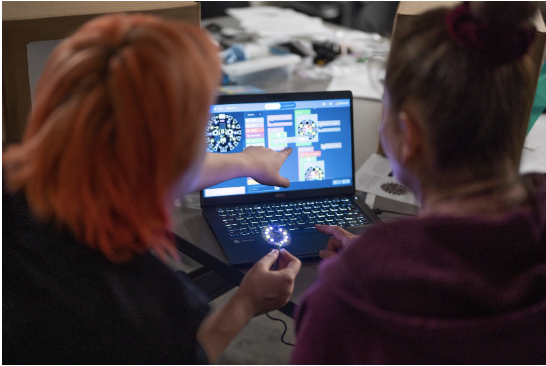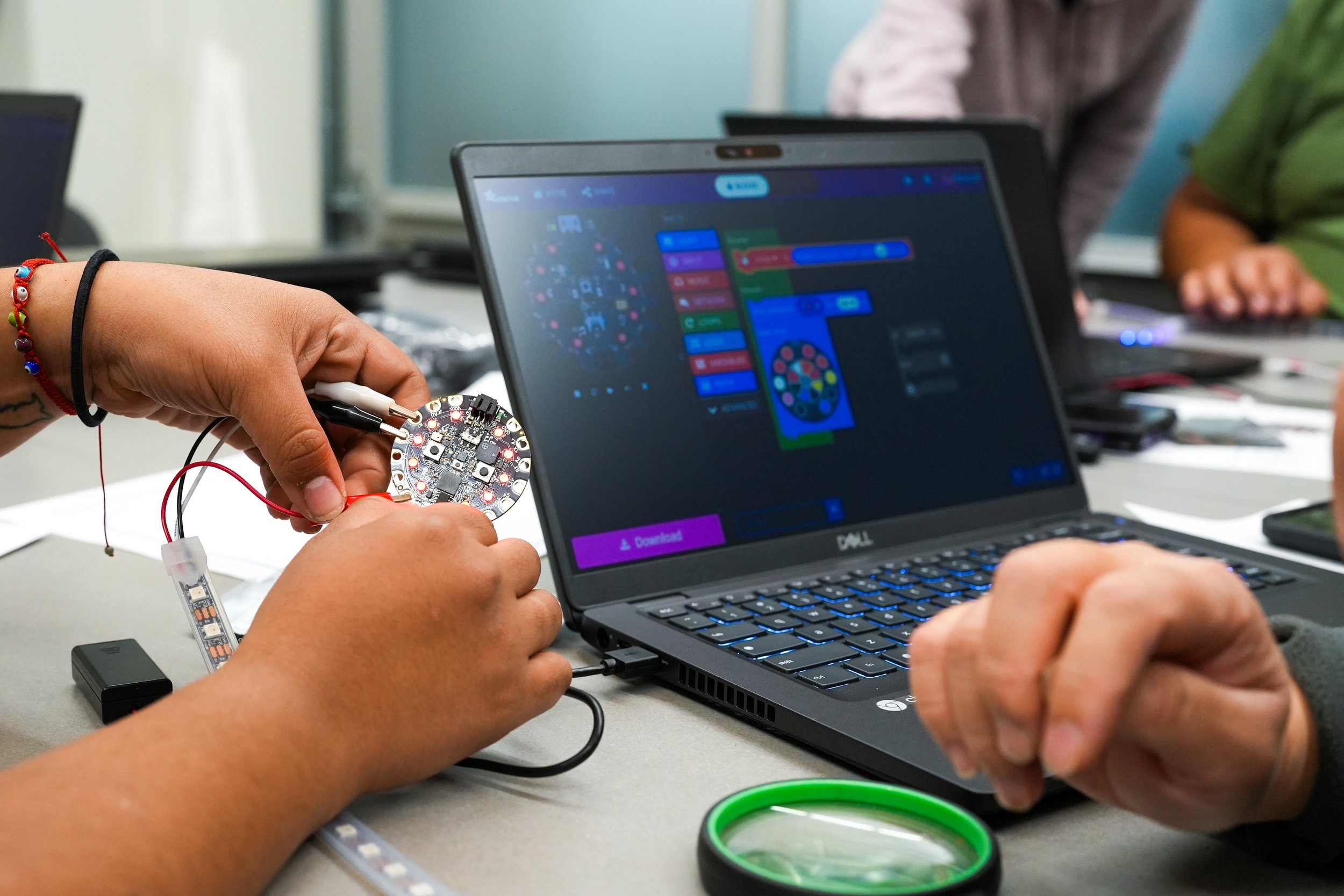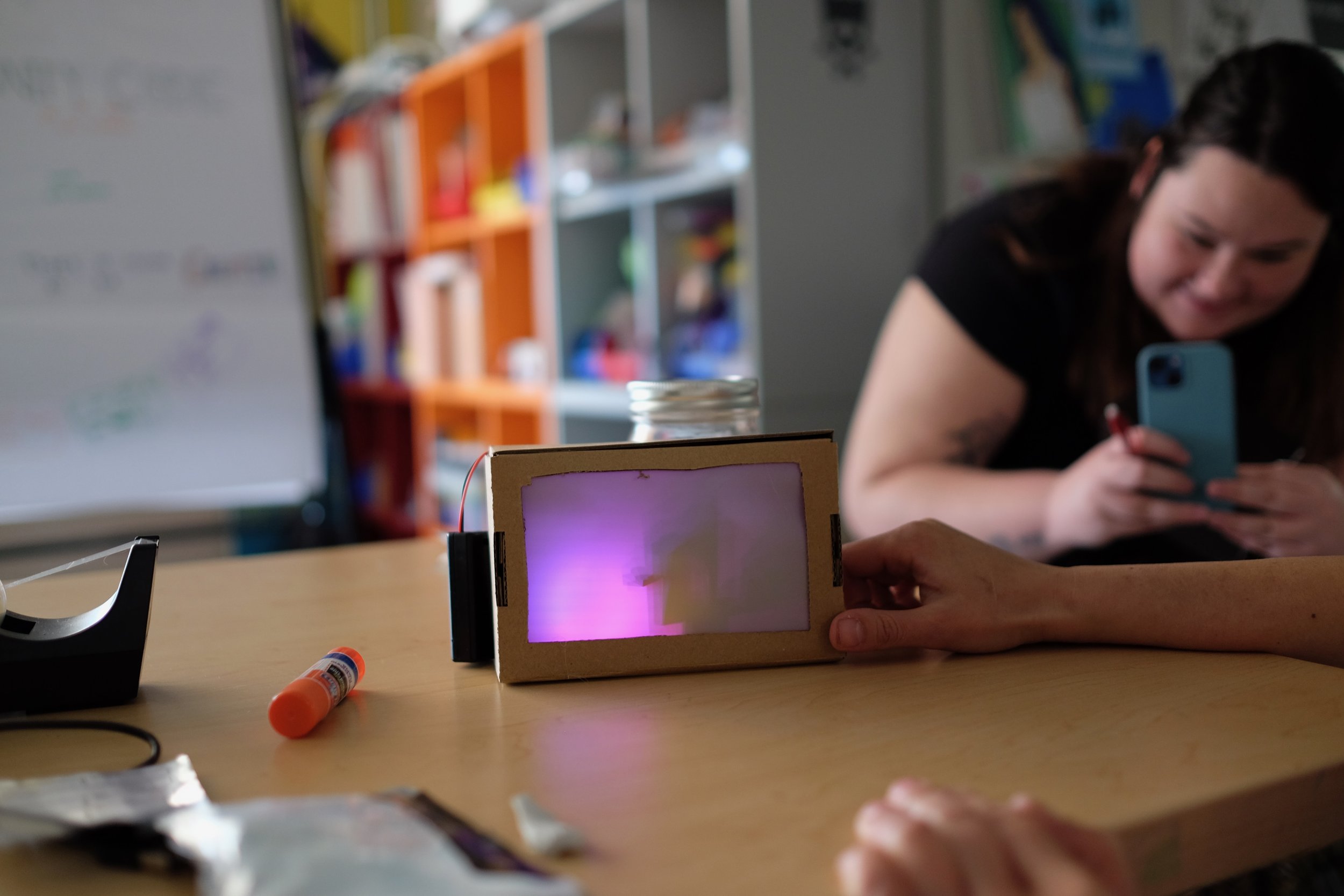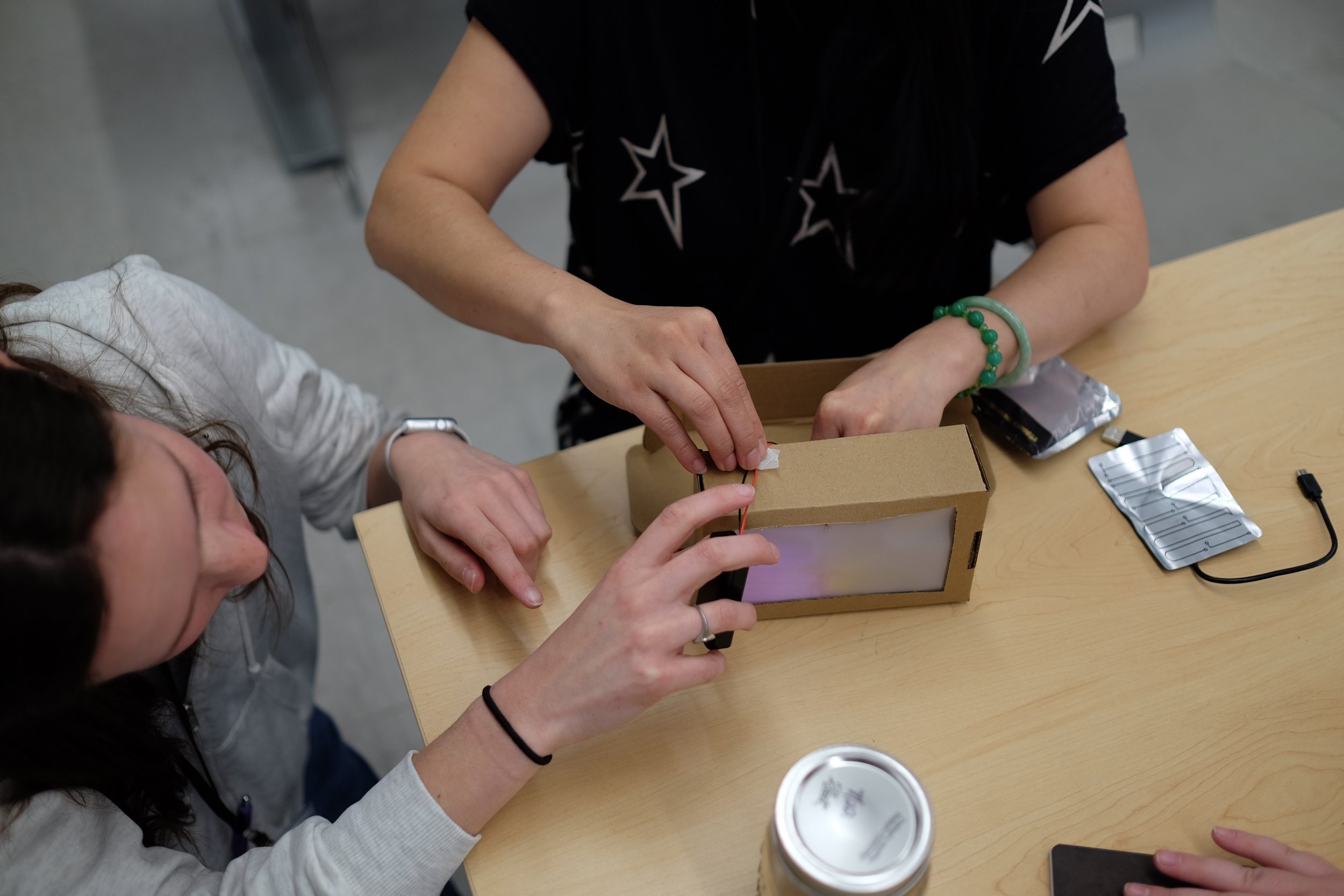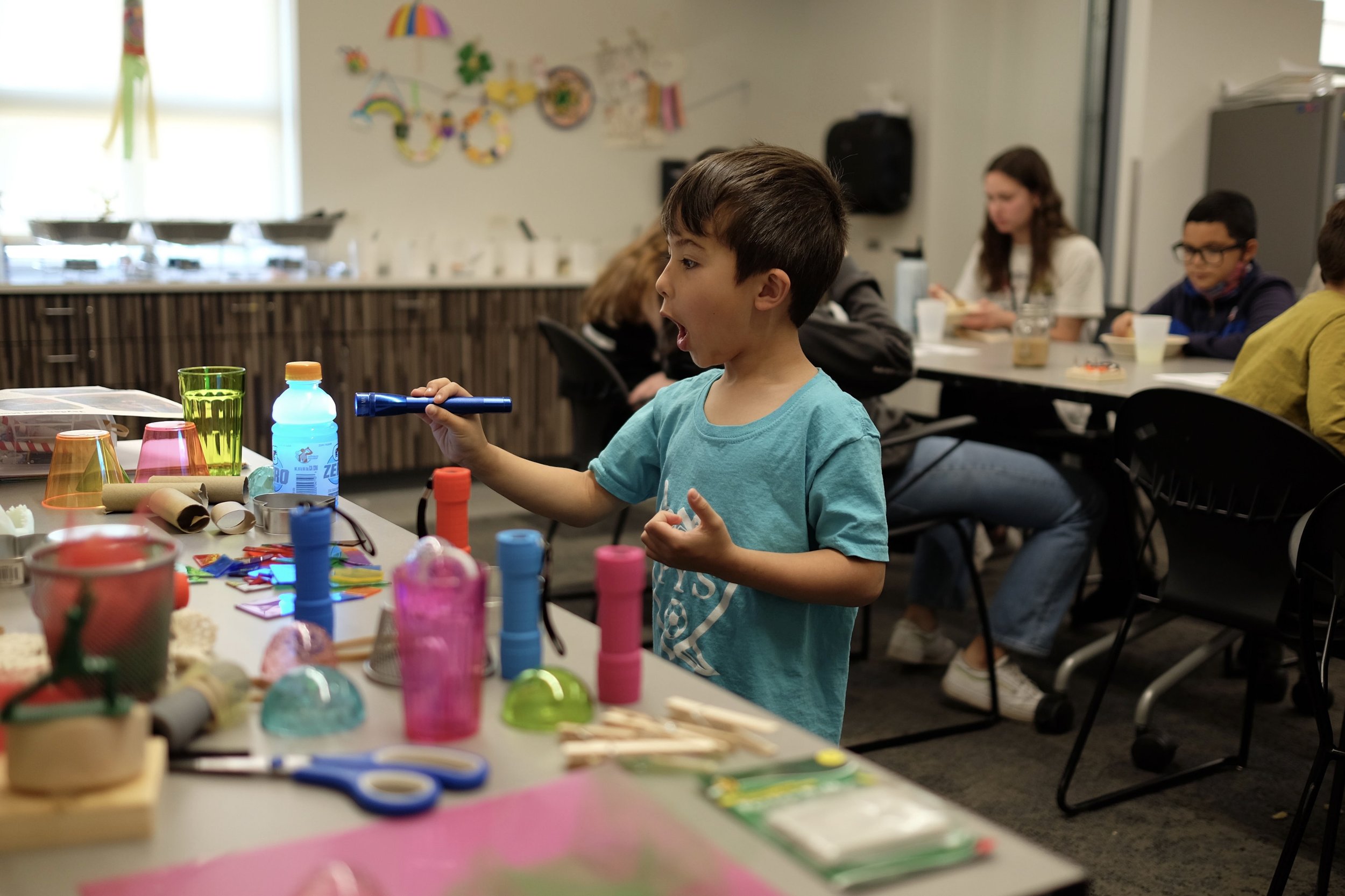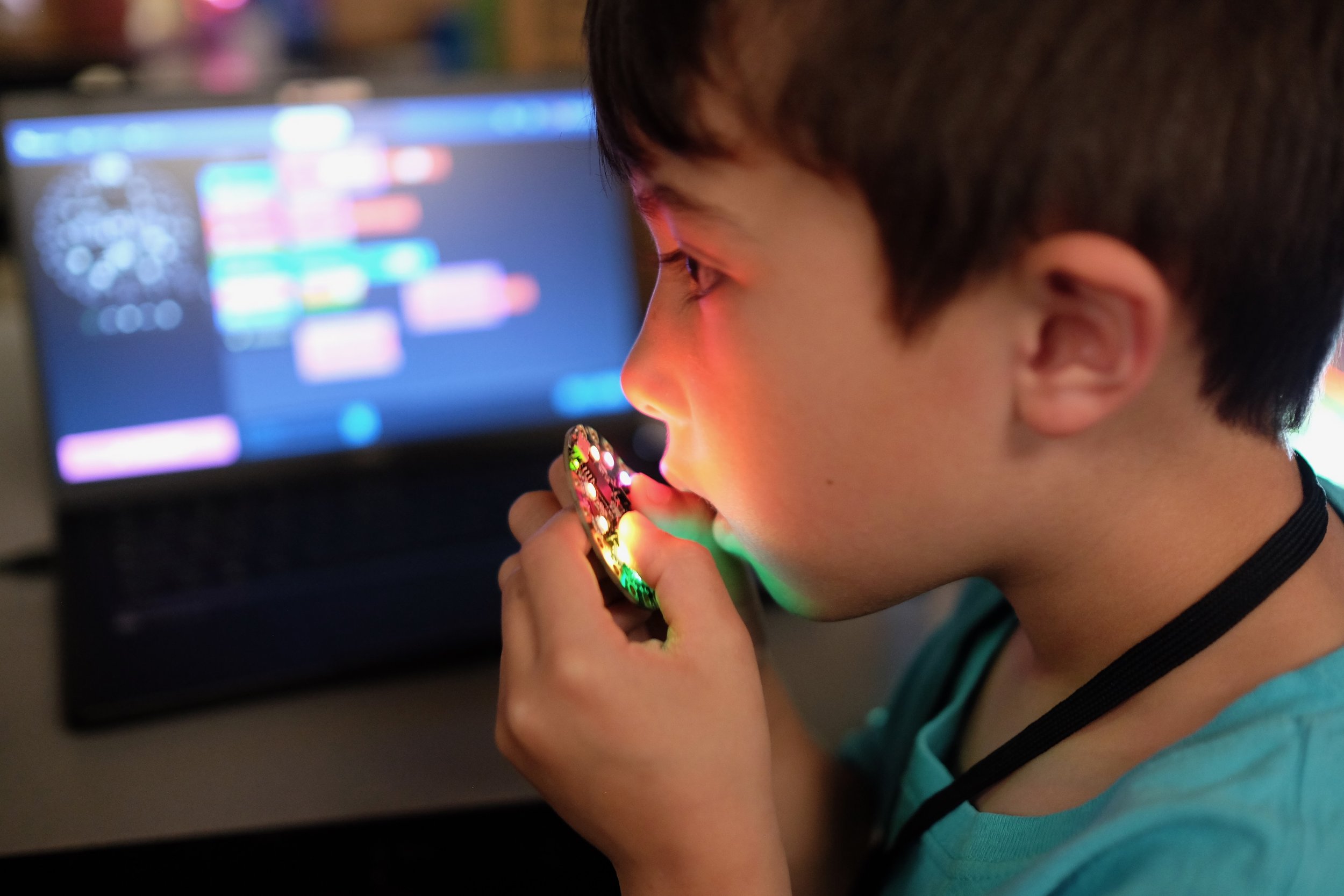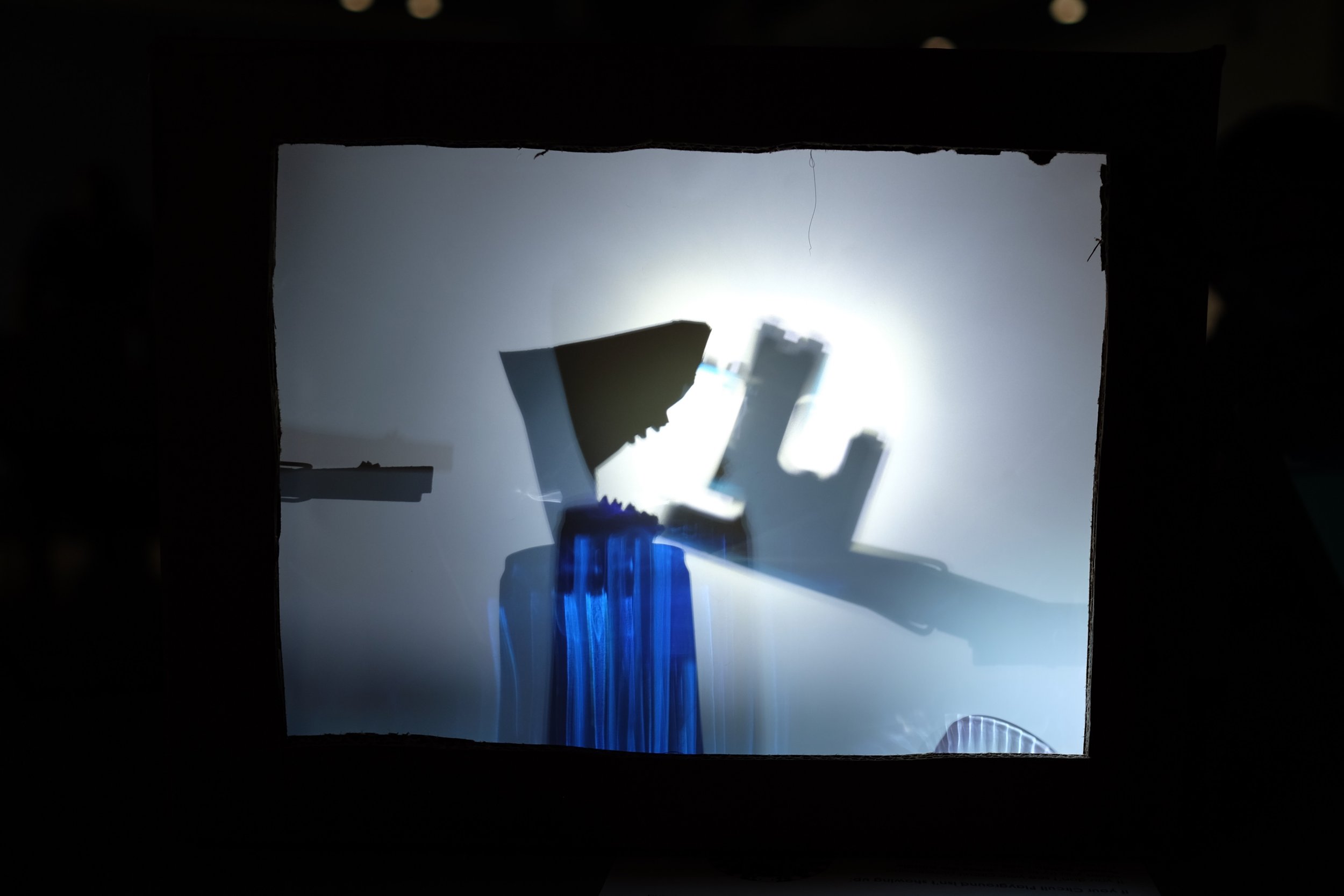This past April, Creative Communities facilitated a new iteration of Family Creative Learning (FCL) program in collaboration with the Hadley Branch Denver Public Library. We continued our long term partnership with Jose, a facilitator at the Hadley ideaLAB makerspace who previously helped us design our virtual FCL workshops and last year’s FCL workshop series. We also continued to include pre-service teachers as facilitators and co-designers of the FCL workshops. We recruited and worked with four pre-service teachers from the School of Education at CU Boulder who are undergraduate students in the process of becoming elementary school teachers.
In this blog post we’ll share what was new about this iteration, some of our “whys” behind these design changes, as well as what we’re excited to explore next.
Design Changes of New Iteration
Increasing Pre-service Teachers Involvement
Following last year’s FCL workshops [include link], Jose expressed to our team a wish that to more deeply engage pre-service teachers in the process of designing the activity, as well as had more time to become familiar with the ideaLAB and its community. We were excited by this suggestion and decided to expand the pre-service teachers’ involvement this year. Starting in February, our team including pre-service teachers (PST’s) spent Saturdays as a design team at the ideaLab at the Hadley Public Library engaging in activities that are popular with visitors, iterating on the design of the FCL activity for families, and learning to document making and tinkering experiences. The PST’s were compensated for their time and treated their engagement with the ideaLAB and co-design as a part-time job, meeting consistently each Saturday from February through the implementation of the program in April. The fact that they were compensated, and able to see spending time at the ideaLAB and working on design activities as a legitimate form of teacher preparation, made their participation possible.
We saw wide-reaching benefits of this shift including the depth of relationships that the pre-service teachers were able to foster with families, their comfort with the tools and working alongside participants, and their confidence in suggesting design tweaks to implement before the next workshop during our post-workshop reflections.
Introducing Computing Tools Sooner
Another tweak that we implemented was how the computing tools, the Circuit Playground Express (CPX) and Neopixel LED light strips were introduced. Last year we introduced the idea of telling a family story first, and provided scaffolding such as storyboards to help families think about a story they may tell with their light box. Families started exploring with everyday materials, such as colorful cups, paper, and flashlights to think about the story they may tell. However, we found that it was challenging for families to decide on a story to bring to life in their lightbox when they didn’t know what was possible with the computing tools yet. This year, we introduced the CPX to parents during the first workshop so that they knew about its functionality ie: the ability to animate lights, trigger responses based on sensory input like shaking or loud noises, and that it could be used to add sound. During the second workshop they learned how to create an animation using the neopixel strip and more about inputs available on the CPX. Last year we received feedback that participants wish they had more time working with the computing tools so this change gave families more flexibility deciding if they wanted to work with the CPX and neopixels or on other parts of their project each week.
Shifting How We Scaffold Storytelling
Finally, we iterated on the way that we talked about and scaffolded storytelling in the workshop. First we added a new activity during the first workshop where families were invited to create a mini version of a lightbox using small 4 x 6” boxes and a lego duck. We called this activity “duck party” and participants were invited to use the lights on the CPX to create a small scene for the duck. We demonstrated how you can verbally narrate a story while bringing it to life using simple light animations on the CPX, for example: “The duck went to a pool party and cannon balled into the pool” where shaking the box with a CPX taped inside triggers the LED lights to turn blue like water.
As mentioned earlier, we also think that introducing the computing tools during the first workshop allowed participants to better understand what was possible, and allowed parents to more confidently facilitate their young people to think about what storytelling might look like with the tools available to them.
On average our participants in our workshop series this year were younger than last year, which meant that storytelling looked different than it had previously. Whereas last year families spent time working on storyboards together and drawing out the scenes depicting an experience they’d previously had together, this year families mainly followed the interests of their young people in the moment, and were responsive to the materials around them. For example, one participant was excited by a 3D printed shark head he had found in the ideaLAB and led his family in creating a story about a battle between a shark and a duck in their light box. Another family loved creating a “duck dance party” during the first workshop, as they also enjoy having dance parties as a family together at home, and decided to keep working on that theme together in their larger light box.
Next Steps
Our team remains excited by the possibility of using Circuit Playground Express as a tool for meaningful expressing in computing projects, however, we’re also aware of the higher barrier to entry associated with this type of tool. In the future we’re continuing to explore different ways to take up the idea of “light boxes” using a CPX and how we might think about the combination of storytelling and computing. Next week Ronni will be visiting the Tinkering Studio at the Exploratorium where she will be working with that team to explore what drop-in version of light play may look like as well as how to think about storytelling with these tools in other ways. Stay tuned!
These materials are based upon work supported by the National Science Foundation under Grant No. (2005764, 1908351).
